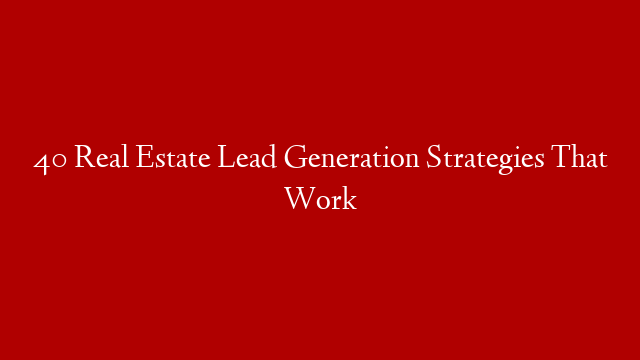Google lead generation ads are one of the most effective ways to get new clients for your service business. Here’s everything you need to know about setting up a campaign that will get results.
As a service business, your number one goal is to get new clients. Google lead generation ads can be a powerful tool to help you reach that goal.
When done correctly, lead generation ads can be extremely effective at getting high-quality leads that are interested in your services.
Unfortunately, many businesses don’t know how to set up their lead generation campaigns correctly and as a result, they don’t get the results they want.
In this article, we’re going to show you how to set up a lead generation ad campaign that actually works. We’ll cover everything from choosing the right keywords to designing your ad so it converts well.
By the end of this article, you’ll know exactly how to set up a successful lead generation ad campaign on Google. Let’s get started!
Step #1: Choose the Right Keywords
The first step in setting up a successful lead gen ad campaign is choosing the right keywords. These are the words and phrases that potential customers will use when they are searching for a business like yours on Google.
For example, if you’re a plumber, some relevant keywords might be “plumbing services” or “find a plumber near me”.
Choosing the right keywords is critical for two reasons: First, it will determine who sees your ad. You want to make sure you target keywords that are relevant to your business and that potential customers are actually searching for. Second, it will impact your quality score, which we’ll talk more about later. The better your quality score, the lower your costs per lead will be. So choose wisely! Try using these tips: use google trends and google keyword planner too
Use keyword research tools like Google Trends and Google Keyword Planner to find relevant keywords for your business. These tools will show you how many people are searching for each keyword and whether that demand is increasing or decreasing over time. You can also use them to get ideas for other relevant keywords you may not have thought of yourself. Once you have a list of potential keywords, it’s time to start narrowing them down using these criteria: search volume (the number of monthly searches), competition (how difficult it is to rank for that keyword), and relevance (how closely related the keyword is to your business). Try to choose 1-3 main “seed” keywords with high search volume and low competition that are relevant to your business model. Then create a list of long-tail keywords (more specific phrases) based on those seed keywords.. For example, if one of your seed keywords is “plumbing services”, some long-tail keywords might be “residential plumbing services” or “commercial plumbing services”. Long-tail keywords tend to have less search volume but they are often easier (and less expensive) to rank for than broad terms like “plumbing services”.. Use Negative Keywords too – In addition to targeting positive keywords (keywords related to what you do), you should also add negative keywords (keywords related to what you don’t do)to your campaign so you don’t waste money on leads who aren’t interested in what you offer.. For example, if you only provide residential plumbing services, you would add “commercial” as a negative keyword so people searching for “commercial plumbing services” wouldn’t see your ad.. Step #2: Set Up Your Campaign Structure.. Now that you know which keywords you want to target, it’s time to set up your campaign structure in Google Ads.. Start by creating 1 campaign per location or service area if you serve multiple areas or offer multiple services.. Within each campaign , create 1 ad group per service type or per target market segment . So if Plumbingcampaign has 3 distinct service types offered(residential , commercial ,new construction ), then there would be 3 ad groups : one for each service type.. If Campaign was created for multiple locations , then there would be anad groupfor each location ..Within each ad group , create 1 text ad per unique selling proposition(USP). A USP is something that makes your product or service unique or different from competitors .. For example , if one of the USPsfor Joe’s Plumbingis ” We’re the only plumbers in XYZ area with 25 years experience”, then I would craft anad aroundthat particular selling point ..Ifyou’re not sure what makes your product or service unique , ask yourself this question : ” Why should someone do business with me over my competitor?” .Onceyou have answersto that question , craft anad around each answer .. That’s it ! That’s all there is too it whenit comes toputting togetheryourcampaign structurein Google Ads . Just remember : 1 campaign per locationor service area , 1 ad group per target market segmentor per service type ,and 1 text addraft per unique selling propositionor key difference betweenyou & competitor .. Step #3: Write Compelling Ad Copy.. Now that you have your campaigns ,ad groups ,andtext ads all set up,…



